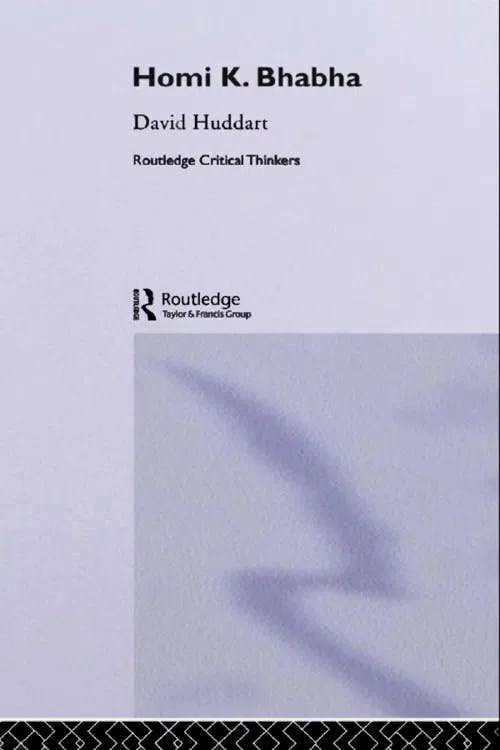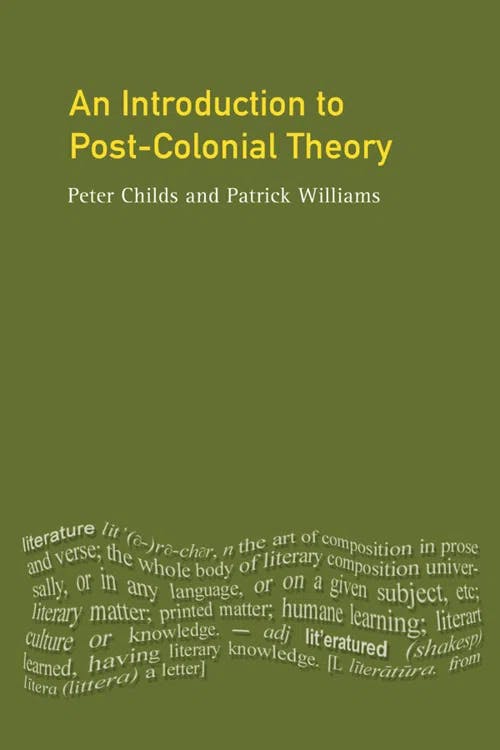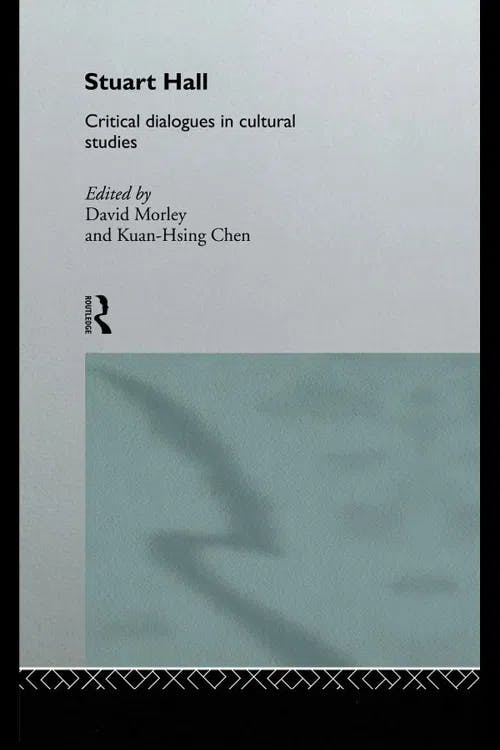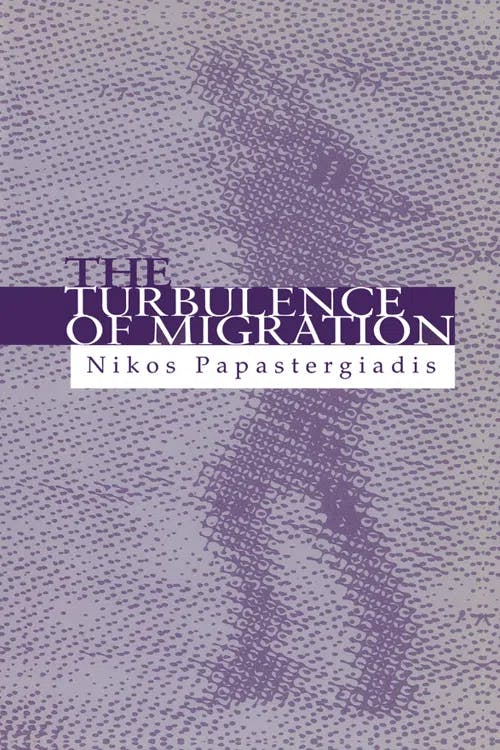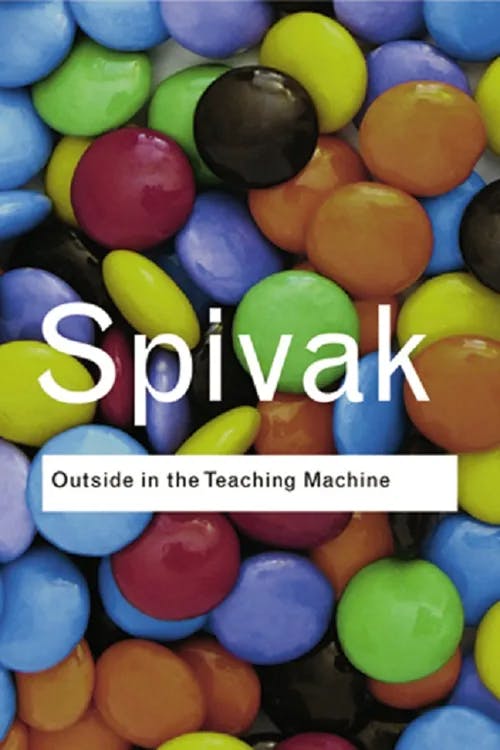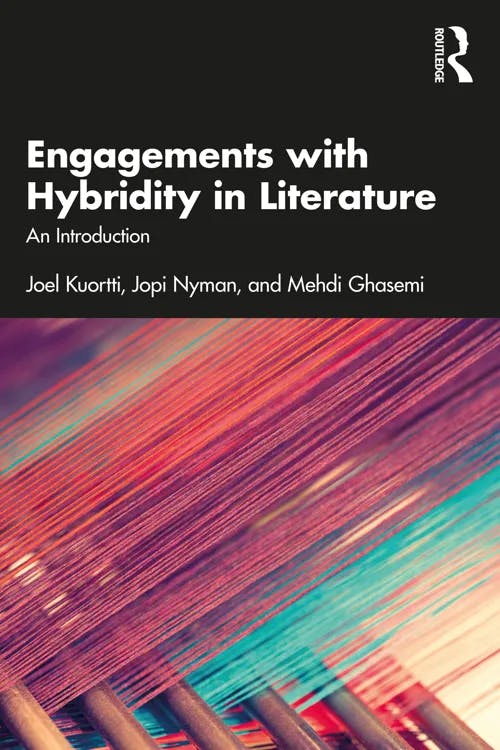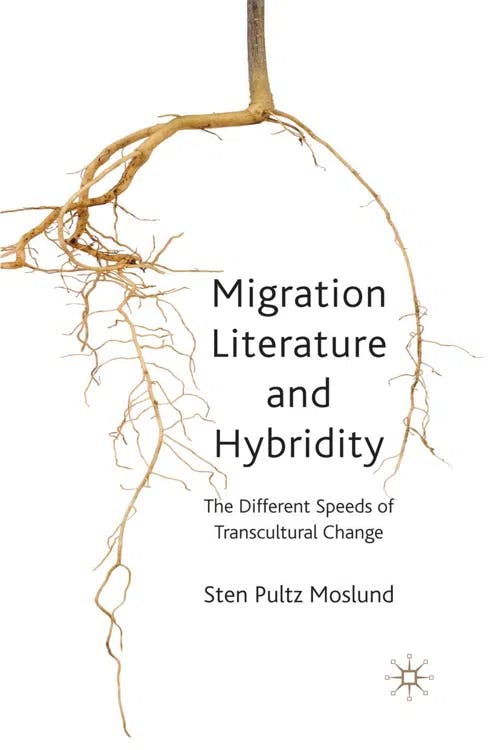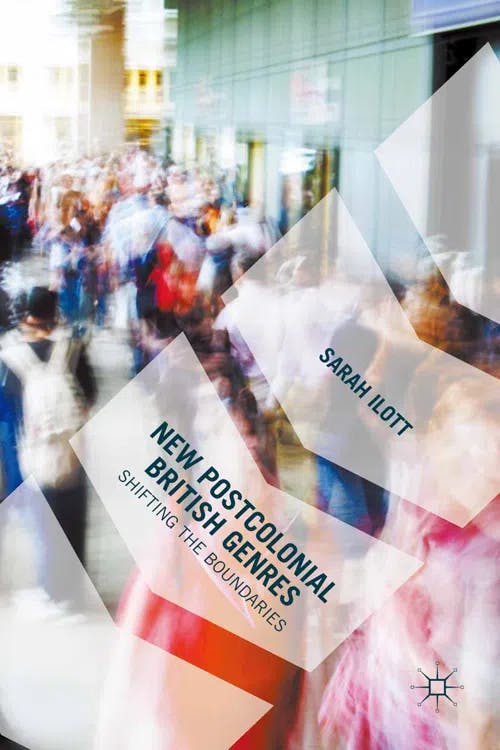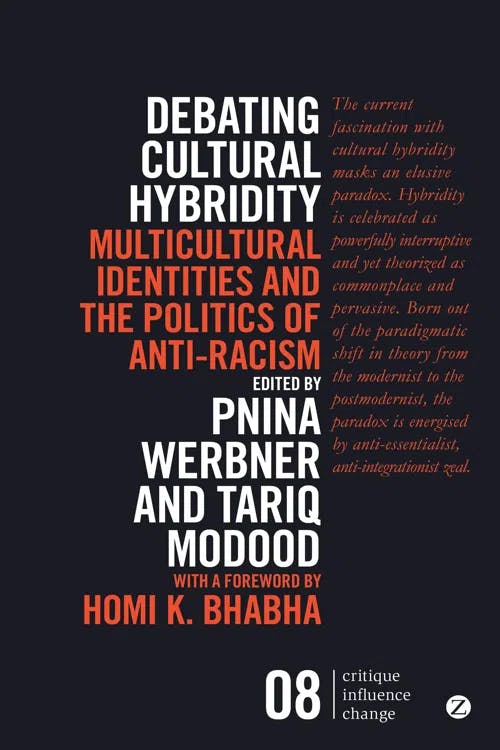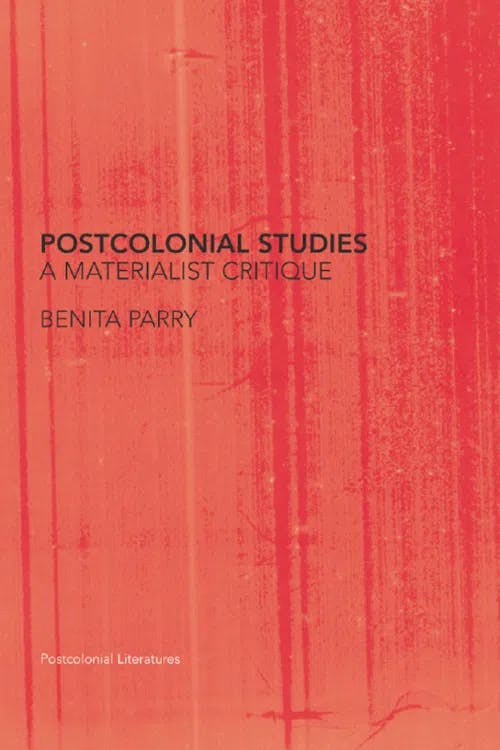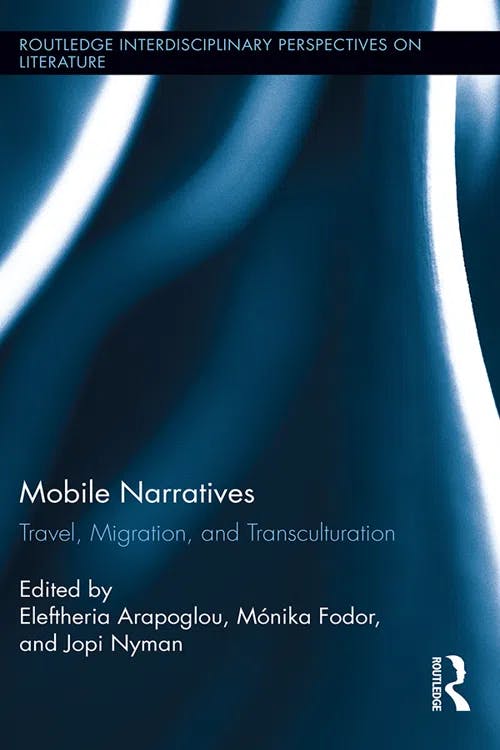What is Hybridity in Postcolonial Theory?
PhD, English Literature (Lancaster University)
Date Published: 04.03.2024,
Last Updated: 05.03.2024
Share this article
Definition
Hybridity is a term commonly used in postcolonial theory that describes how new cultures are formed in the contact zone of colonization. The concept of hybridity is associated with theorist Homi K. Bhabha, who explores how the formation and reformation of new cultures, as a result of colonial relations, disrupts any notion of a “pure” culture. This hybridization process occurs in what Bhabha refers to as the “Third Space,” an interstitial site where new cultural identities are continually shaped.
As David Huddart summarizes,
Cultures are crafted, sculpted, or narrated objects: like traditions, cultures are invented. [...] Bhabha’s idea of hybridity [...] suggests that cultures come after the hybridizing process, rather than existing before. In colonial relationships, this is just as true of the colonizer as of the colonized. In the present, this should remind us that cultures are part of an ongoing process, which for Bhabha suggests that majority liberal cultures in the West must view themselves through the post-colonial perspective. (Homi K. Bhabha, 2006)
David Huddart
Cultures are crafted, sculpted, or narrated objects: like traditions, cultures are invented. [...] Bhabha’s idea of hybridity [...] suggests that cultures come after the hybridizing process, rather than existing before. In colonial relationships, this is just as true of the colonizer as of the colonized. In the present, this should remind us that cultures are part of an ongoing process, which for Bhabha suggests that majority liberal cultures in the West must view themselves through the post-colonial perspective. (Homi K. Bhabha, 2006)
Hybridity defies the concept of the binary between the oppressor and the oppressed, between the culture of the East and that of the West, a distinction emphasized in Edward Said’s work on Orientalism. Instead, Bhabha argues that, due to colonization, the colonizer introduces aspects of their culture to the natives (often as part of the “civilizing” missions of imperialism) and, in turn, the natives introduce parts of their culture to the colonizer. As such, hybridity is productive and makes space for cultural differences, rather than advocating for assimilation. Hybridization can occur on numerous levels, including the racial, cultural, linguistic, and political.
As this guide will go on to explore, Bhabha argues that the hybridization process can be a form of resistance, eschewing the idea that culture is imposed upon the colonized “Other” and passively accepted.
The term “hybridity” has also been used to refer to all forms of cross-cultural exchange, often as a result of increasing globalization. However, this definition has been heavily challenged by postcolonial theorists. In Post-Colonial Studies: The Key Concepts, Bill Ashcroft, Gareth Griffiths, and Helen Tiffin write that this use of the term
[...] has been widely criticized, since it usually implies negating and neglecting the imbalance and inequality of the power relations it references. By stressing the transformative cultural, linguistic and political impacts on both the colonized and the colonizer, it has been regarded as replicating assimilationist policies by masking or ‘whitewashing’ cultural differences. [...] There is, however, nothing in the idea of hybridity as such that suggests that mutuality negates the hierarchical nature of the imperial process or that it involves the idea of an equal exchange. This is, however, the way in which some proponents of decolonization and anti-colonialism have interpreted its current usage in colonial discourse theory. (2013)
Bill Ashcroft, Gareth Griffiths, and Helen Tiffin
[...] has been widely criticized, since it usually implies negating and neglecting the imbalance and inequality of the power relations it references. By stressing the transformative cultural, linguistic and political impacts on both the colonized and the colonizer, it has been regarded as replicating assimilationist policies by masking or ‘whitewashing’ cultural differences. [...] There is, however, nothing in the idea of hybridity as such that suggests that mutuality negates the hierarchical nature of the imperial process or that it involves the idea of an equal exchange. This is, however, the way in which some proponents of decolonization and anti-colonialism have interpreted its current usage in colonial discourse theory. (2013)
This guide explores how the concept of hybridity, starting as a linguistic term, was developed in postcolonial discourse by Bhabha in a series of essays culminating in his work The Location of Culture (1994). We will also assess the significance of this development in representing colonial relations. Following this, we will explore some alternative approaches to hybridity in theory and the use of this concept in fiction.
Hybridity in language
Though Bhabha is associated with the development of the term hybridity in a postcolonial context, the first theorist to highlight the significance of hybridity was formalist Mikhail Bakhtin. Bakhtin defined hybridization as follows:
It is a mixture of two social languages within the limits of a single utterance, an encounter, within the arena of an utterance, between two different linguistic consciousnesses, separated from one another by an epoch, by social differentiation or by some other factor. (The Dialogic Imagination, 1975)
In other words, hybridization occurs when there are two voices emerging at once in language. Bakhtin further distinguishes between two forms of linguistic hybridization: unconscious (or organic) and conscious (or intentional).
Organic hybridization occurs as language evolves over time. Intentional hybridization, on the other hand, is produced deliberately (often in artistic contexts) and “sets different points of view against each other in a conflictual structure” (Young, Colonial Desire, 2005). This, for Bakhtin, has political significance and can be a subversive act by undermining the authoritative voice. The concept of hybridity as a form of resistance is then developed by Bhabha to discuss the colonizer/colonized relationship.
Power dynamics and hybridity
For Bhabha, hybridization occurs during encounters of difference. More specifically, when different cultures meet in the contact zone of colonization, new cultures, or aspects of cultures, are formed and reformed. Bhabha goes on to explain that this process can act as a challenge to colonial authority and can be a productive outcome of colonization. As Bhabha writes in The Location of Culture,
Hybridity is the sign of the productivity of colonial power, its shifting forces and fixities; it is the name for the strategic reversal of the process of domination through disavowal (that is, the production of discriminatory identities that secure the ‘pure’ and original identity of authority). Hybridity is the revaluation of the assumption of colonial identity through the repetition of discriminatory identity effects. It displays the necessary deformation and displacement of all sites of discrimination and domination. It unsettles the mimetic or narcissistic demands of colonial power but reimplicates its identifications in strategies of subversion that turn the gaze of the discriminated back upon the eye of power. (1994, [2012])
Homi K. Bhabha
Hybridity is the sign of the productivity of colonial power, its shifting forces and fixities; it is the name for the strategic reversal of the process of domination through disavowal (that is, the production of discriminatory identities that secure the ‘pure’ and original identity of authority). Hybridity is the revaluation of the assumption of colonial identity through the repetition of discriminatory identity effects. It displays the necessary deformation and displacement of all sites of discrimination and domination. It unsettles the mimetic or narcissistic demands of colonial power but reimplicates its identifications in strategies of subversion that turn the gaze of the discriminated back upon the eye of power. (1994, [2012])
In other words, hybridity forces the colonizer to re-evaluate their own assumptions about their superior and pure identity, thus unsettling the power balance between them and the people they have subjugated.
To understand how hybridization works, we first must become familiar with the concept of mimicry. In simple terms, mimicry is used in postcolonial studies to describe how the colonial powers wish to subjugate colonized people by imposing Eurocentric ideals on them — this involves insisting that the natives dress and behave the same way as the colonizers. By imitating the colonizer, however, the colonial Other undermines the colonizer’s sense of superiority. In other words, because the colonizer views their own culture as more advanced and unique to them, mimicry by a civilization they deem inferior is regarded as mockery or a show of defiance.
The “civilizing mission” of the colonizer thus takes what Bhabha refers to as a “comic turn from the high ideals of the colonial imagination to its low mimetic literary effects” (1994, [2012]). Here, Bhabha refers to literary theory, whereby “low mimesis” (also known as “low mimetic mode”) refers to texts in which the hero is not superior to other characters or his environment (a concept developed by Northrop Frye in Anatomy of Criticism, 1957). In the context of colonial discourse, the colonizers who have previously viewed themselves as heroes come to realize, through mimicry, that they are the same as everyone else, including those they have colonized. As Huddart writes, "Bhabha brings insights from literary theory to his analysis of mimicry, and literary theory shows us that representations construct the world as well as mirroring it" (2006).
As the native adopts aspects of the colonizer’s culture and vice-versa in this manner, hybrid cultures are created.
Bhabha illustrates how cultures are formed in colonial spaces using the dissemination of the Bible in India as a starting point. Bhabha explains that while the “Word of God” is given to the natives as an unchangeable, infallible, and authoritative text, this is complicated by the responses of the natives who interpret the Bible according to their own culture and understanding. They ask: “how can it be the European book, when we believe it is God’s gift to us?” (Bhabha, 1994, [2012]).
As Peter Childs and Patrick Williams explain,
The problematic of the Bible being simultaneously English and universal is challenged by local, cultural differences. The natives’ questions require that authority and its texts split - that they engage with cultural difference and so become not mirrored or brought into a dialectic but hybridized, as when vegetarian Hindus understand Christian communion in terms of a kind of cannibalism, eating the flesh of Christ, or vampirism, drinking his blood. (An Introduction to Postcolonial Theory, 2014)
Peter Childs and Patrick Williams
The problematic of the Bible being simultaneously English and universal is challenged by local, cultural differences. The natives’ questions require that authority and its texts split - that they engage with cultural difference and so become not mirrored or brought into a dialectic but hybridized, as when vegetarian Hindus understand Christian communion in terms of a kind of cannibalism, eating the flesh of Christ, or vampirism, drinking his blood. (An Introduction to Postcolonial Theory, 2014)
Bhabha explains the significance of such questioning for destabilizing the binary of colonizer/colonized:
The voice of command is interrupted by questions that arise from these heterogeneous sites and circuits of power which, though momentarily ‘fixed’ in the authoritative alignment of subjects, must continually be re-presented in the production of terror or fear. The paranoid threat from the hybrid is finally uncontainable because it breaks down the symmetry and duality of self/other, inside/outside. (1994, [2012])
Hybrid cultures and identities, therefore, instill a sense of fear in the colonizer as their “intercultural, hybrid demands” both “[challenge] the boundaries of discourse and subtly [change] its terms by setting up another specifically colonial space of the negotiations of cultural authority” (1994). Bhabha argues that the colonizers believed the natives would accept the “Word of God” passively, and in a European context, not anticipating this would be reinterpreted in the native culture with negotiation, questions, and conflict. By engaging in such debates and speaking for themselves, the natives redefine themselves and their relations with the colonizer.
Alternative approaches to hybridity: Hall and Spivak
In The Turbulence of Migration (2013), Nikos Papastergiadis traces hybridity debates within the work of postcolonial scholars, focusing on how Bhabha’s notion of productive hybridity has been received by others in the field such as Gayatri Chakravorty Spivak and Stuart Hall.
Stuart Hall, as Papastergiadis points out, agrees with Bhabha about the hybrid nature of identity, though specifies that this should be context-specific. We can see this in Hall’s 1992 interview with Kuan-Hsing Chen:
I think cultural identity is not fixed, it’s always hybrid. But this is precisely because it comes out of very specific historical formations, out of very specific histories and cultural repertoires of enunciation, that it can constitute a ‘positionality’, which we call, provisionally, identity. (“The formation of a diasporic intellectual,” Stuart Hall: Critical Dialogues in Cultural Studies, 2006)
Edited by Kuan-Hsing Chen and David Morley
I think cultural identity is not fixed, it’s always hybrid. But this is precisely because it comes out of very specific historical formations, out of very specific histories and cultural repertoires of enunciation, that it can constitute a ‘positionality’, which we call, provisionally, identity. (“The formation of a diasporic intellectual,” Stuart Hall: Critical Dialogues in Cultural Studies, 2006)
As Papastergiadis summarizes,
Hall’s understanding of the process of transformation is never constructed in terms of either an absolutist oppositionality – where one position demolishes its antagonist – or a neat succession, with each stage being a clean break from the one before. Transformation is seen as occurring in a more ‘generative’ way: as ideas, world-views and material forces interact with each other, they undergo a process of being internally reworked until the old ones are displaced. (2013)
Nikos Papastergiadis
Hall’s understanding of the process of transformation is never constructed in terms of either an absolutist oppositionality – where one position demolishes its antagonist – or a neat succession, with each stage being a clean break from the one before. Transformation is seen as occurring in a more ‘generative’ way: as ideas, world-views and material forces interact with each other, they undergo a process of being internally reworked until the old ones are displaced. (2013)
For Hall, “translation across cultural difference is always possible” (Papastergiadis, 2013).
This view is contested by Spivak in her essay “Can the Subaltern Speak?” (1985). The subaltern refers to members of a class who are excluded from the colonial elite and pushed to the margins of society. For more information on this, see our guide “What are Subaltern Studies?”
In her essay, “Spivak sharply dissents from both Bhabha’s and Hall’s suggestion that hybridity has purchase both in the Third World post-colonial arena and within the diasporic condition of minorities in the First World” (Papastergiadis, 2013). Instead, Spivak draws a distinction between diasporic communities in developed nations and the subaltern position in the Global South. As Papastergiadis sums up,
There is no clear process by which the realities and experiences of the Indian subaltern can be translated into Western categories. Spivak insists that in this instance there is no prior space that can facilitate a dialogue between the West and its Other. (2013)
As Spivak later reiterates in Outside the Teaching Machine,
I have been trying to make the point, over and over again, that migrant and postcolonial mixtures and (mis)appropriations—catachreses—are different in degree within their two different spheres but also different in kind one from the other. Sometimes “hybridity”—like the old “androgyny” theory of feminism—can make us forget these differences. (1993, [2012])
Gayatri Chakravorty Spivak
I have been trying to make the point, over and over again, that migrant and postcolonial mixtures and (mis)appropriations—catachreses—are different in degree within their two different spheres but also different in kind one from the other. Sometimes “hybridity”—like the old “androgyny” theory of feminism—can make us forget these differences. (1993, [2012])
Hybridity in postcolonial migrant literature
Hybridity has been deployed as a theme in numerous works of postcolonial fiction, particularly when it comes to representing the migrant experience as one of in-betweenness and ambiguity. As Joel Kuortti explains,
Hybridity is one of the major thematic axes of the discourse of postcolonial cultures. It functions as an operational articulation of ambiguity and changeability, showing the dynamics of opposition and resistance to the dominant ideological and cultural colonial hegemony, and offering a break with the insistence on duality and opposition. [...] As one of the most recurrent concepts in postcolonial literature, hybridity represents itself in the contact zones between the colonized and the colonizer and their mutual interdependence. (“Hybridity in Postcolonial Literary Contexts,” Engagements with Hybridity in Literature, 2023)
Joel Kuortti, Jopi Nyman, and Mehdi Ghasemi
Hybridity is one of the major thematic axes of the discourse of postcolonial cultures. It functions as an operational articulation of ambiguity and changeability, showing the dynamics of opposition and resistance to the dominant ideological and cultural colonial hegemony, and offering a break with the insistence on duality and opposition. [...] As one of the most recurrent concepts in postcolonial literature, hybridity represents itself in the contact zones between the colonized and the colonizer and their mutual interdependence. (“Hybridity in Postcolonial Literary Contexts,” Engagements with Hybridity in Literature, 2023)
The following section will explore the theme of hybridity in two highly influential postcolonial texts: The Enigma of Arrival by V. S. Naipaul (1987) and The Satanic Verses (1988) by Salman Rushdie.
The Enigma of Arrival
One key example of migration literature which engages with the subject of hybridity, though perhaps in a non-traditional way, is V. S. Naipaul’s semi-autobiographical novel The Enigma of Arrival (1987). The story primarily takes place in Wiltshire, England, where Naipaul has rented a cottage after leaving his home country Trinidad and Tobago. Throughout his stay, Naipaul ruminates on how pastoral England, contrary to his previous perceptions, is continually changing and how the old world is being left behind.
In Migration Literature and Hybridity, Sten Pultz Moslund points out that the novel is “commonly read as a monocultural assault against hybridity and heterogeneity, sub- ordinating difference to a superior English culture” (2010). For example, at various points Naipaul expresses his own Eurocentric values, in the form of his appreciation of English history and culture, and seems to lack understanding regarding postcolonial struggles. However, Moslund points out,
[...] this does not mean that the novel’s discourse is necessarily racist, essentialist and anti-hybriditist. On the contrary, it may be dealing with issues of post-coloniality, migration and hybridity in a different, and, perhaps, more intricate manner. (2010)
Sten Pultz Moslund
[...] this does not mean that the novel’s discourse is necessarily racist, essentialist and anti-hybriditist. On the contrary, it may be dealing with issues of post-coloniality, migration and hybridity in a different, and, perhaps, more intricate manner. (2010)
Moslund goes on to state that,
Naipaul’s novel offers a hybridising discourse that is very unusual in migration literature, a hybridising discourse that is at times intentionally unintense, in marked contrast to the common visions within the genre of conspicuously creolised futures. (2010)
This hybridizing discourse can be seen, for example, when Naipaul realizes that the harmonious image of the English countryside is a construction, and parallels this with his own experience of Trinidad. In doing so, Naipaul “starts recasting his representation of the locals in the kind of nomadological discourse that is usually reserved for migrant protagonists in this kind of literature” (Moslund, 2010).
The Satanic Verses
Salman Rushdie’s The Satanic Verses (1988) is one of the most controversial books of the twentieth century due to its portrayal of Islam. The text, however, remains critically acclaimed and has been lauded for its portrayal of the migrant experience. In his essay “In Good Faith” (1990), Rushdie writes that
The Satanic Verses celebrates hybridity, impurity, intermingling and the transformation that comes of new and unexpected combinations of human beings, cultures, ideas, politics, movies, songs. It rejoices in mongrelisation and fears the absolutism of the pure. Mélange, hotchpotch, a bit of this and a bit of that is how newness enters the world. (Imaginary Homelands, 1992)
Bhabha borrows the phrase “how newness enters the world” for a chapter title in The Location of Culture.
As Sarah Ilott states in New Postcolonial British Genres,
Rushdie’s work is itself a reclamation of identity, as he rescues terms like ‘hybrid,’ ‘impurity’ and ‘mongrel’ from the negative connotations with which poets such as Jackie Kay had recently associated them. But in so doing he simultaneously creates a new binary, where ‘the absolutism of the Pure’ is to be feared and combated. The Satanic Verses boasts a plethora of characters that fall on either side of this binary, and the spokespersons for absolutism or uncompromising ideas are often demonised or ridiculed. (2015)
Sarah Ilott
Rushdie’s work is itself a reclamation of identity, as he rescues terms like ‘hybrid,’ ‘impurity’ and ‘mongrel’ from the negative connotations with which poets such as Jackie Kay had recently associated them. But in so doing he simultaneously creates a new binary, where ‘the absolutism of the Pure’ is to be feared and combated. The Satanic Verses boasts a plethora of characters that fall on either side of this binary, and the spokespersons for absolutism or uncompromising ideas are often demonised or ridiculed. (2015)
The novel is a work of magical realism and revolves around two Indian Muslims: Gibreel Farishta, an actor, and Saladin Chamcha, a man who has fallen out with his father and is dealing with a loss of faith. The pair fall from a plane as a result of a terrorist bomb and, during their fall, transform: Farishta into an archangel and Chamcha into a cloven-hoofed devil. Let’s turn, for a moment, to Rushdie’s description of the fall as a transformative event:
Hybrid cloud-creatures pressed in upon them, gigantic flowers with human breasts dangling from fleshy stalks, winged cats, centaurs, and Chamcha in his semi-consciousness was seized by the notion that he, too, had acquired the quality of cloudiness, becoming metamorphic, hybrid, as if he were growing into the person [Farishta] whose head nestled now between his legs and whose legs were wrapped around his long, patrician neck.
[...]
How does newness come into the world? How is it born?
Of what fusions, translations, conjoinings is it made?
How does it survive, extreme and dangerous as it is? What compromises, what deals, what betrayals of its secret nature must it make to stave off the wrecking crew, the exterminating angel, the guillotine?
Is birth always a fall?
(Rushdie, 1988, [2015])
As indicated in Rushdie’s summary of the work, The Satanic Verses is primarily concerned with the formation of new cultures in interstitial spaces and through the migrant experience.
When Chamcha and Farishta arrive on the English coast, Chamcha is arrested as an illegal immigrant, while Farishta (who appears as an angel) is not taken into custody. Chamcha is demonized, and brutally treated by the police. His wife leaves him, he witnesses the police sparking race riots in London, and decides to return to India:
In the end, [Chamcha] decides to make it up with his father and become Indian again. The migrant has to redefine himself, but it is not entirely a self-definition. Others redefine him, and in many cases in a racist manner. (Peter Van der Veer “‘The Enigma of Arrival’: Hybridity and Authenticity in the Global Space,” Debating Cultural Hybridity, 2015)
Edited by Pnina Werbner and Tariq Modood
In the end, [Chamcha] decides to make it up with his father and become Indian again. The migrant has to redefine himself, but it is not entirely a self-definition. Others redefine him, and in many cases in a racist manner. (Peter Van der Veer “‘The Enigma of Arrival’: Hybridity and Authenticity in the Global Space,” Debating Cultural Hybridity, 2015)
Van der Veer goes on to explain that newness comes into the world through the production and consumption of literature which can enable individuals to self-fashion:
Literature has replaced religious texts as a source of elevated reflection about the nature of the self. Rushdie’s thematic takes part precisely in that displacement. What is remarkable, however, is the extent to which his hybrid self-fashioning feeds on Islamic traditions. It is this engagement which leads to a reading of his text not only by those who valorise the invention of culture in art, but also by migrant-settlers who are very differently placed in relation to those traditions. (2015)
Bhabha points out how the text illustrates the in-betweenness of “the minority position” and
dramatizes the activity of culture’s untranslatability; and in so doing, it moves the question of culture’s appropriation beyond the assimilationist’s dream, or the racist’s nightmare, of a ‘full transmissal of subject-matter’; and towards an encounter with the ambivalent process of splitting and hybridity that marks the identification with culture’s difference. (1994, [2012])
Homi. K. Bhabha
dramatizes the activity of culture’s untranslatability; and in so doing, it moves the question of culture’s appropriation beyond the assimilationist’s dream, or the racist’s nightmare, of a ‘full transmissal of subject-matter’; and towards an encounter with the ambivalent process of splitting and hybridity that marks the identification with culture’s difference. (1994, [2012])
In other words, The Satanic Verses underscores how culture resists translation and interpretation, and argues that the solution to this is not in assimilation or exclusion, but in accepting the hybrid nature of culture.
For more on Rushdie’s text, see the Bright Summaries (2019) guide.
There are numerous other works of fiction which engage with discussions of hybridity, identity, and culture, such as Arundhati Roy’s The God of Small Things (1997), Bharati Mukherjee’s Jasmine (1989) and On Earth We’re Briefly Gorgeous (2019) by Ocean Vuong.
Criticisms
Robert J. C. Young criticizes Bhabha’s use of the term hybridity, which he argues is problematic due to its roots in colonial history and scientific racism. In Colonial Desire, Young explains how the term was used in the nineteenth century to refer to the offspring of different races and to suggest that those races were of another species:
Hybridity in particular shows the connections between the racial categories of the past and contemporary cultural discourse: it may be used in different ways, given different inflections and apparently discrete references, but it always reiterates and reinforces the dynamics of the same conflictual economy whose tensions and divisions it re-enacts in its own antithetical structure. (2005)
Robert J. C. Young
Hybridity in particular shows the connections between the racial categories of the past and contemporary cultural discourse: it may be used in different ways, given different inflections and apparently discrete references, but it always reiterates and reinforces the dynamics of the same conflictual economy whose tensions and divisions it re-enacts in its own antithetical structure. (2005)
As such, Young argues that the continued use of the term does a disservice to postcolonial studies by emphasizing otherness and reinforcing the type of racial hierarchies which can be found in Victorian racial theories and in the advocation of eugenics. For more on this, see our study guide “What is Social Darwinism?”
One of the major criticisms of Bhabha’s concept of hybridity is that it can be seen as sanitizing or downplaying colonialism and its effects. Benita Parry argues that
Theoretical moves directed at erasing inscriptions of inequality and conflict in the material colonial world are evident in Bhabha’s disdain for that anti-colonialist tradition which perceived the struggle in terms that were antagonistic rather than agonistic [...].(Postcolonial Studies, 2004)
Benita Parry
Theoretical moves directed at erasing inscriptions of inequality and conflict in the material colonial world are evident in Bhabha’s disdain for that anti-colonialist tradition which perceived the struggle in terms that were antagonistic rather than agonistic [...].(Postcolonial Studies, 2004)
Parry adds that those who have been (or still are) engaged in colonial struggles via neocolonialism may read such analyses with “considerable disbelief at the construction this puts on the situation they are fighting,” as it downplays or negates “counter-discourses which every liberation movement has recorded” (2004). However, as Bhabha later clarifies in an interview for Art in America:
In my writing, I’ve been arguing against the multiculturalist notion that you can put together harmoniously any number of cultures in a pretty mosaic. You cannot just solder together different cultural traditions to produce some brave new cultural totality. The current phase of economic and social history makes you aware of cultural difference not at the celebratory level of diversity but always at the point of conflict or crisis. (1991; quoted by Huddart in Homi K. Bhabha, 2006)
The notion of hybridity has also resulted in the homogenization of certain cultures:
Writers who employ the concept have also been faulted for identifying Latin American culture with hybridity and so blurring distinctions between different regions of Latin America. Uruguay, for instance, with a population that is mainly of Spanish and Italian descent, is very different from its neighbour Brazil, where Africans, Japanese, and immigrants from many parts of Europe, as well as the indigenous population, have contributed to the cultural mix. (Peter Burke, Cultural Hybridity, 2013)
Peter Burke
Writers who employ the concept have also been faulted for identifying Latin American culture with hybridity and so blurring distinctions between different regions of Latin America. Uruguay, for instance, with a population that is mainly of Spanish and Italian descent, is very different from its neighbour Brazil, where Africans, Japanese, and immigrants from many parts of Europe, as well as the indigenous population, have contributed to the cultural mix. (Peter Burke, Cultural Hybridity, 2013)
Despite these criticisms, Bhabha’s work remains highly influential in postcolonial studies of identity.
Hybridity today
As a result of increased travel and globalization, conversations surrounding cultural hybridity still continue to be of interest to postcolonial scholars. As Eleftheria Arapoglou, Mónika Fodor, and Jopi Nyman write in their introduction to Mobile Narratives,
Cultural contacts, travel, and mobility open up often hidden links and forgotten histories of diaspora and hybridity, generating new configurations of identity in formerly uniform spaces, as well as local appropriations of imported ideas, practices, and texts. Travel, in its various forms, in other words, plays a crucial role in transculturation and the construction of identities. (2013)
Edited by Eleftheria Arapoglou, Mónika Fodor, and Jopi Nyman
Cultural contacts, travel, and mobility open up often hidden links and forgotten histories of diaspora and hybridity, generating new configurations of identity in formerly uniform spaces, as well as local appropriations of imported ideas, practices, and texts. Travel, in its various forms, in other words, plays a crucial role in transculturation and the construction of identities. (2013)
The essays in this collection examine representations of travel and migration from the nineteenth century to the modern day, exploring how travelers and migrants navigate their identities at cultural border zones.
Additionally, in Hybridity, or the Cultural Logic of Globalization (2006), Marwan M. Kraidy highlights the importance of hybridity in communication and media relations around the globe.
The continued invocation of Bhabha’s concept of hybridity, despite its criticisms, indicates its long-standing relevance when it comes to unpacking the complexity of cultural identities that have been shaped, and reshaped, by colonial encounters, migration, and increased globalization.
Further reading on Perlego
A Critique of Postcolonial Reason: Toward a History of the Vanishing Present (1999) by Gayatri Chakravorty Spivak
Hybridity: Limits, Transformations, Prospects (2012) by Anjali Prabhu
In Theory: Classes, Nations, Literatures (2020) by Aijaz Ahmad
Questioning Hybridity, Postcolonialism and Globalization (2011) by Amar Acheraïou
What is hybridity in simple terms?
Which scholars are associated with the concept of hybridity?
What is an example of the theme of hybridity in literature?
Bibliography
Arapoglou, E., Fodor, M., and Nyman, J. (eds.) (2013) Mobile Narratives: Travel, Migration, and Transculturation. Routledge. Available at:
https://www.perlego.com/book/1675301/mobile-narratives-travel-migration-and-transculturation
Ashcroft, B., Griffiths, G., and Tiffin, H. (2013) Post-Colonial Studies: The Key Concepts. Routledge. Available at:
https://www.perlego.com/book/1612288/postcolonial-studies-the-key-concepts
Bakhtin, M. (1982) The Dialogic Imagination. University of Texas Press.
Bhabha, H. K. (2012) The Location of Culture. Routledge. Available at:
https://www.perlego.com/book/1609977/the-location-of-culture
Bright Summaries (2019) The Satanic Verses by Salman Rushdie (Book Analysis): Detailed Summary, Analysis and Reading Guide. BrightSummaries.com. Available at: https://www.perlego.com/book/3575819/the-satanic-verses-by-salman-rushdie-book-analysis-detailed-summary-analysis-and-reading-guide
Burke, P. (2013) Cultural Hybridity. Polity. Available at:
https://www.perlego.com/book/1535318/cultural-hybridity
Childs, P., and Williams, P. (2014) An Introduction to Postcolonial Theory. Routledge. Available at:
https://www.perlego.com/book/1554968/an-introduction-to-postcolonial-theory
Frye, N. (2020) Anatomy of Criticism: Four Essays. Princeton University Press. Available at:
https://www.perlego.com/book/1258206/anatomy-of-criticism-four-essays
Hall, S. (2006) “The formation of a diasporic intellectual,” in Chen, K. -H., and Morley, D. (eds.) Stuart Hall: Critical Dialogues in Cultural Studies. Routledge. Available at:
https://www.perlego.com/book/1602123/stuart-hall-critical-dialogues-in-cultural-studies
Huddart, D. (2006) Homi K. Bhabha. Routledge. Available at:
https://www.perlego.com/book/1617783/homi-k-bhabha
Ilott, S. (2015) New Postcolonial British Genres: Shifting the Boundaries. Palgrave Macmillan. Available at:
https://www.perlego.com/book/3482377/new-postcolonial-british-genres-shifting-the-boundaries
Kraidy, M. M. (2006) Hybridity, or the Cultural Logic of Globalization. Temple University Press. Available at:
https://perlego.com/book/2330045/hybridity-or-the-cultural-logic-of-globalization
Kuortti, J. (2023) “Hybridity in Postcolonial Literary Contexts,” in Kuortti, J., Nyman, J., and Ghasemi, M. (eds.) Engagements with Hybridity in Literature: An Introduction. Available at:
https://www.perlego.com/book/4205154/engagements-with-hybridity-in-literature-an-introduction
Moslund, S. P. (2010) Migration Literature and Hybridity: The Different Speeds of Transcultural Change. Palgrave Macmillan. Available at: https://www.perlego.com/book/3500361/migration-literature-and-hybridity-the-different-speeds-of-transcultural-change
Mukherjee, B. (1991) Jasmine. Virago.
Naipaul, V. S. (2o11) The Enigma of Arrival. Pan Macmillan.
Papastergiadis, N. (2013) The Turbulence of Migration: Globalization, Deterritorialization and Hybridity. Polity. Available at:
Parry, B. (2004) Postcolonial Studies: A Materialist Critique. Routledge. Available at:
https://www.perlego.com/book/1618208/postcolonial-studies-a-materialist-critique
Roy, A. (2022) The God of Small Things. HarperCollins
Rushdie, S. (1992) Imaginary Homelands: Essays and Criticism 1981-1991. Penguin Random House
Rushdie, S. (2015) The Satanic Verses. Penguin.
Spivak, G. C. (2010) “Can the Subaltern Speak?,” in Morris, R. (ed.) Can the Subaltern Speak? Reflections on the History of an Idea. Columbia University Press. Available at: https://www.perlego.com/book/775134/can-the-subaltern-speak-reflections-on-the-history-of-an-idea
Spivak, G. C. (2012) Outside the Teaching Machine. Routledge. Available at:
https://www.perlego.com/book/1620284/outside-in-the-teaching-machine
Van der Veer, P. (2015) “‘The Enigma of Arrival’: Hybridity and Authenticity in the Global Space,” in Werbner, P., and Modood, T. (eds.) Debating Cultural Hybridity: Multicultural Identities and the Politics of Anti-Racism. Zed Books. Available at:
Vuong, O. (2021) On Earth We're Briefly Gorgeous. Penguin Random House.
Young, J. C. (2005). Colonial Desire: Hybridity in Theory, Culture and Race. Routledge. Available at: https://www.perlego.com/book/1606479/colonial-desire-hybridity-in-theory-culture-and-race
PhD, English Literature (Lancaster University)
Sophie Raine has a PhD from Lancaster University. Her work focuses on penny dreadfuls and urban spaces. Her previous publications have been featured in VPFA (2019; 2022) and the Palgrave Handbook for Steam Age Gothic (2021) and her co-edited collection Penny Dreadfuls and the Gothic was released in 2023 with University of Wales Press.

